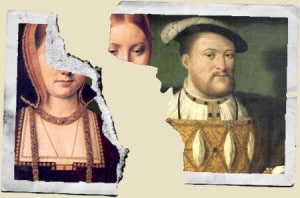 After the brutal events of 1536, we rewind just three years to May 1533 when Anne Boleyn was preparing for her coronation, her moment of triumph.
After the brutal events of 1536, we rewind just three years to May 1533 when Anne Boleyn was preparing for her coronation, her moment of triumph.
On this day in history, 23rd May 1533, Archbishop Thomas Cranmer declared that Henry VIII’s marriage to Catherine of Aragon had been annulled:
“My lord of Canterbury gave sentence this day at 11 o’clock1 in the great cause of matrimony; has declared it to be against the law of God, and has divorced the King from the noble lady Katharine. He has used himself in this matter very honorably, and all who have been sent hither on the King’s behalf have acted diligently and towardly. Sentence shall be given for the King’s second contract of matrimony before the Feast of Pentecost. The process is partly devised. 23 May.”2
Convocation had already ruled, in March 1533, that the marriage was contrary to God’s laws and that the Pope should never have issued as dispensation for it, but, following his consecration as Archbishop, Cranmer had opened a special trial into the annulment proceedings at Dunstable Priory, Bedfordshire. It was on 23rd May 1533 that this court ruled on the marriage and Cranmer could send notification of the sentence to the King:
“Notification of the sentence of divorce between Hen. VIII. and Katharine of Arragon pronounced by archbishop Cranmer. Dated in the monastery of Dunstable, 23 May 1533. Present, Gervase prior of the said monastery, Simon Haynes, S.T.P., John Newman, M.A., and others.
The matrimony between the King and the lady Katharine being dissolved by sufficient authority, all pactions made for the same marriage are also dissolved and of none effect. That is, the jointure shall return again to the King’s use, and the money paid to him by her friends shall be repaid to her.
The matrimony being dissolved, the lady Katharine shall return to the commodity and profits of the first matrimony, and the pactions of the same, made with prince Arthur, and shall enjoy the jointure assigned to her thereby, notwithstanding any quittance or renunciation made in the second pact. For as these renunciations were agreed unto for a sure trust and hope to enjoy the commodities and pactions of the second marriage, which now she cannot enjoy, unless without fault she should be deprived of both, equity and right restore her to the first. This, we think, by our poor learning, to be according both to canon and civil law, unless there are any other treaties and pactions which we have not seen.
For the more clear declaration hereof, we think that when a matrimony is dissolved, if there is no paction of a further bond, then by law the money paid by the woman or her friends shall be restored to her, and the jointure return to the man and his heirs. In this case there is an especial pact that she shall enjoy her jointure durante vita, so that the said jointure is due to her by the pact, and the money paid by her and her friends by the law.”3
This declaration ‘rubber-stamped’ Convocation’s ruling and paved the way for the coronation of Anne Boleyn. The pageantry began on the 29th May and culminated in the coronation ceremony at Westminster Abbey on 1st June 1533.
Notes and Sources
- Thomas Bedyll, in a letter to Cromwell, states that the sentence was declared at 10am – LP vi.526
- LP vi. 525, Letter from John Tregonwell to Cromwell, 23rd May 1533
- LP vi. 529